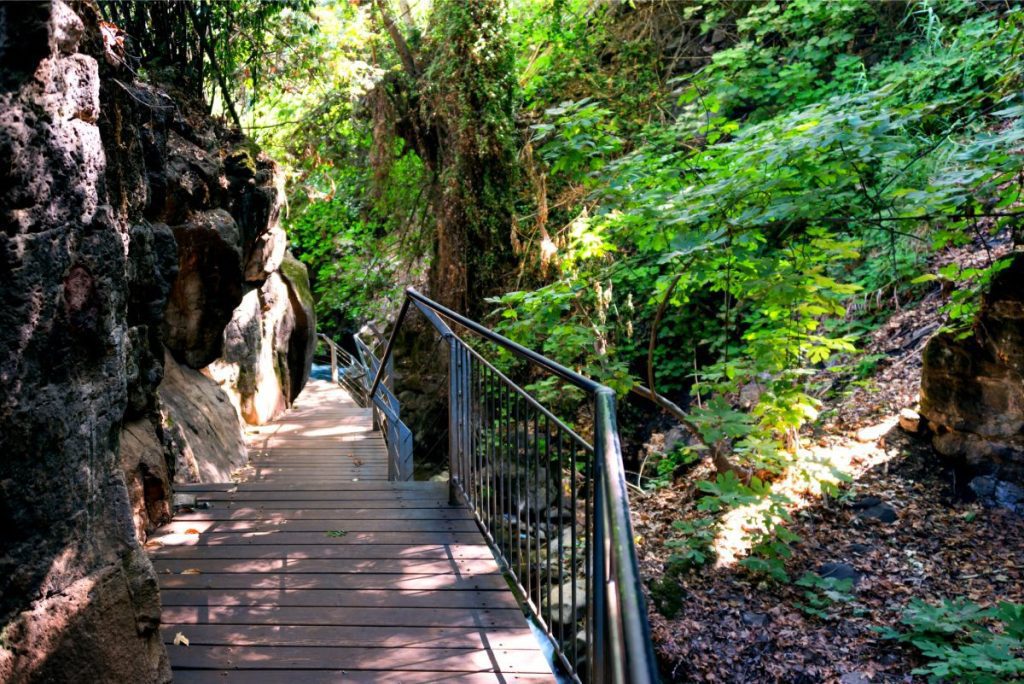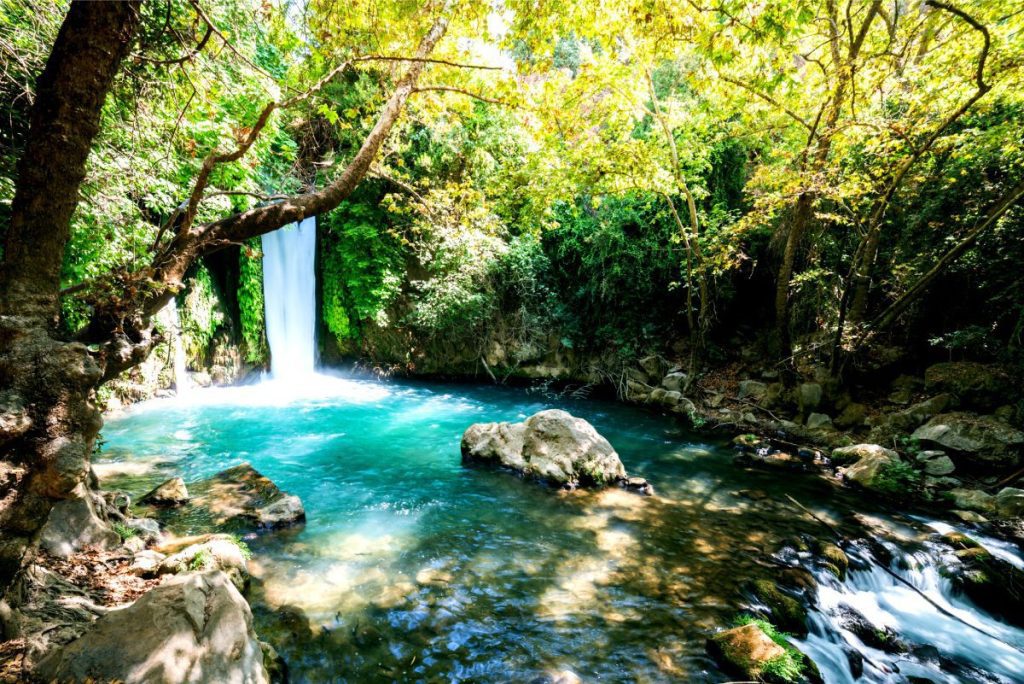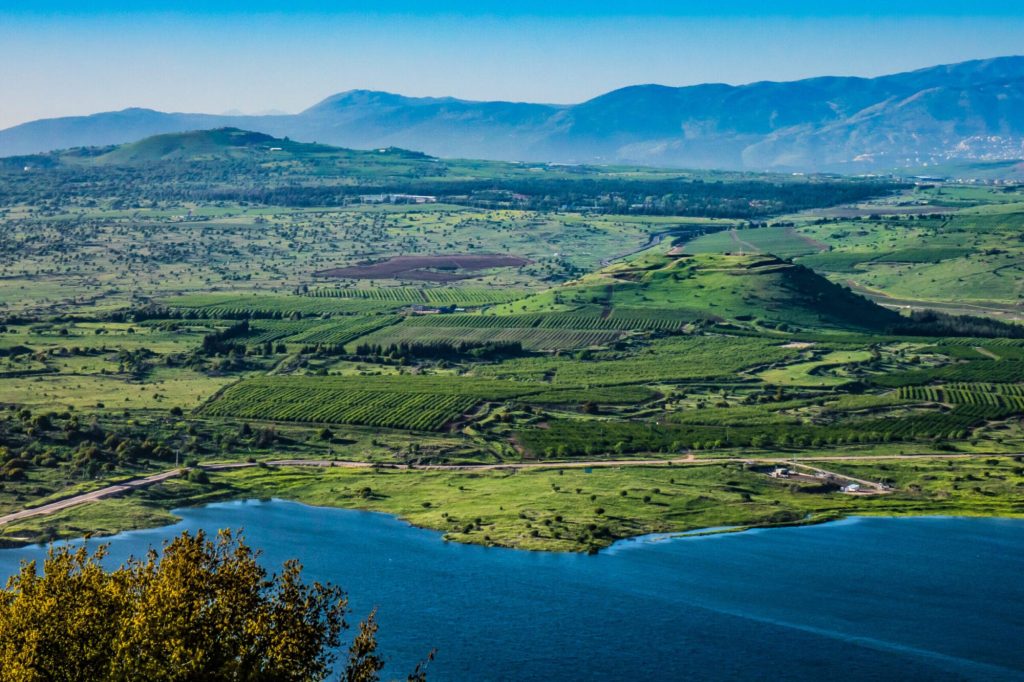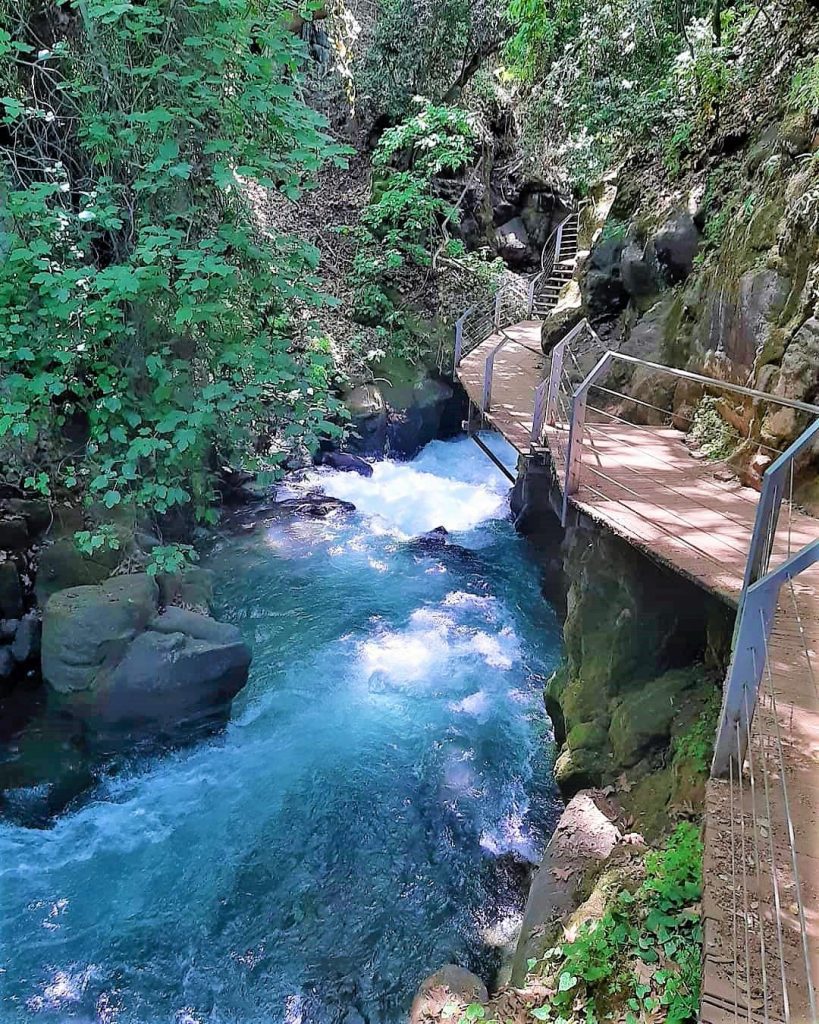Nestled in the picturesque landscapes of northern Israel, the Banias Nature Reserve stands as a breathtaking testament to the beauty of nature and the echoes of history. With its lush greenery, cascading waterfalls, and historical significance, this reserve offers an enchanting escape for nature enthusiasts, history buffs, and families seeking a captivating outdoor experience.
Caesarea Philippi

A Symphony of Waterfalls:
The Banias Waterfall, the highlight of the reserve, is a sight to behold. As you approach, the soothing sound of rushing water beckons you to discover its source. Cascading gracefully over rocky ledges, the waterfall creates a mesmerizing display that captures the essence of nature’s artistry.

Lush Landscapes and Bountiful Flora:
The reserve’s trails wind through luxuriant green landscapes adorned with an array of plant species. From oak and pine trees to wildflowers and ferns, the flora creates a vibrant tapestry that changes with the seasons, making every visit a unique experience.
Echoes of Ancient Civilizations:
Banias, known as Caesarea Philippi in antiquity, was a center of worship dedicated to the Greek god Pan. The remnants of ancient temples, caves, and other architectural features evoke a sense of wonder about the civilizations that once thrived here. Exploring these historical treasures adds a layer of intrigue to your journey.

Trails for All Adventurers:
Banias Nature Reserve offers a range of trails suitable for various skill levels. Whether seeking a stroll or a more challenging hike, the well-marked paths guide you through diverse terrain, from serene forests to rocky overlooks.
The Golan Heights
Capturing Moments of Wonder:
Every corner of Banias offers picturesque vistas that are perfect for photography enthusiasts. From the playful dance of sunlight on the water to the ancient stones cloaked in greenery, every angle invites you to capture the enchantment of the reserve.
Golan Heights Ultimate Guide

A Journey of Nature and Discovery:
Visiting the Banias Nature Reserve is more than an outdoor adventure—it’s an immersion into the harmony of nature and history. It’s a place where waterfalls and woodlands mingle with the echoes of ancient worship. Whether you’re a nature lover, a history enthusiast, or a family seeking a day of exploration, Banias Nature Reserve promises an experience that resonates with the soul.
Golan Day Tour

Banias Nature Reserve Opening Hours:
Last entry to the site: one hour before the cited closing time
Summer Hours:
Sunday–Thursday and Saturday: 08:00-17:00
Friday and holiday eves: 08:00-16:00
Winter Hours:
Sunday–Thursday and Saturday: 08:00-16:00
Friday and holiday eves: 08:00-15:00
Holiday eves: 08:00-13:00
Yom Kippur eve: 08:00-13:00
On holidays and Saturdays, I recommend arriving early; entry is based on space availability.
Phone: +(00)972-(0)4-6902577







